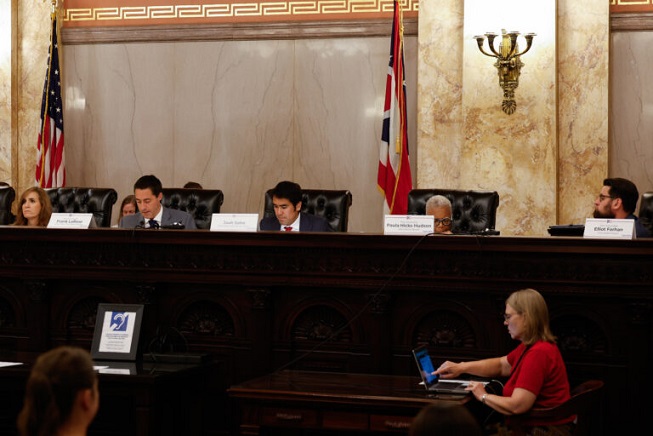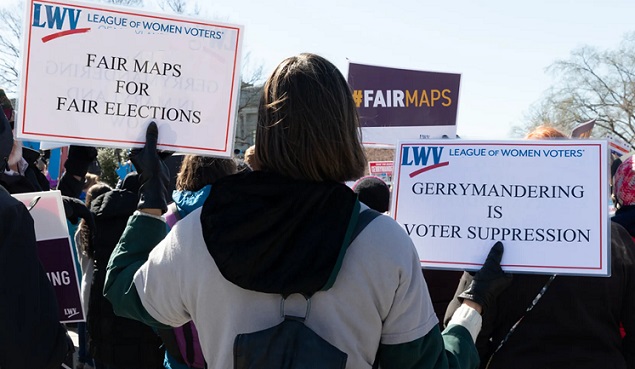Ohio Ballot Board Moves 2024 Redistricting Constitutional Amendment Process Forward!
FEATURED PHOTO: OHIO BALLOT BOARD MEMBER SENATOR PAULA HICKS-HUDSON D-11TH DISTRICT

IdeastreamPublicMedia.org, By Sarah Donaldson-STATEHOUSE NEWS BUREAU, Posted October 23rd 2023
A proposed constitutional amendment that would overhaul how Ohio handles drawing legislative districts cleared another hurdle this month and is now closer to getting in front of voters in November 2024.
The GOP-majority Ohio Ballot Board, chaired by Secretary of State Frank LaRose, voted unanimously to allow the proposal to eventually appear as a single issue on the ballot—rather than dividing it. That would have required the coalition Citizens Not Politicians to gather at least double the number of necessary petition signatures.
It took Citizens Not Politicians three tries to get Ohio Attorney General Dave Yost’s authorization on the language for their proposal to enable an independent commission to take over the redistricting process. But LaRose began the meeting by saying he believed it “should be a quick and efficient meeting,” and in less than ten minutes, the ballot board had made its decision.
That brevity—alongside the vote itself—was a relief for the proposal’s backers as they eye next November’s ballot, according to Jen Miller, the state’s League of Women Voters executive director. The League of Women Voters is backing the proposal.

“It has one single goal of restoring fairness into Ohio’s redistricting process, because Ohioans have been facing gerrymandering for decades,” Miller said.
The amendment would throw out the current redistricting process, in which elected officials on the Ohio Redistricting Commission draw the district maps for congressional and Ohio General Assembly races. The Ohio Redistricting Commission has seven members, including the governor, secretary of state, auditor, and four legislative appointees.
In October 2023, that comes out to five Republicans and two Democrats.
Under the Citizens Not Politicians’ proposal, the state would instead establish an independent commission of 15 members: five Republicans, five Democrats and five independents.
Miller said the goal is to get “everyday people who are going to fairly draw lines.”
The push to overhaul the process comes after years of conflict over redistricting, in a state where one party dominates the political schema. In 2022, the state’s highest court rejected five attempts at ORC-drawn maps, all of which gave Republicans a legislative supermajority. The current Ohio House and Senate maps, adopted in late September, heavily favor Republicans. They are expected to give the GOP a 62%-38% seat advantage in the House and 70%-30% in the Senate.
Citizens Not Politicians now has to gather more than 413,000 valid signatures by early July to get on the 2024 general election ballot.

